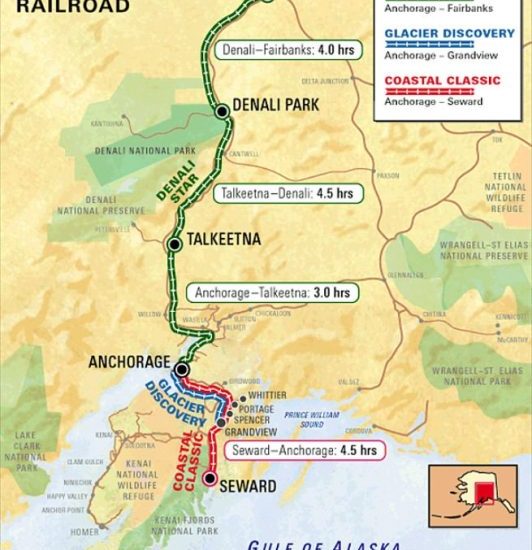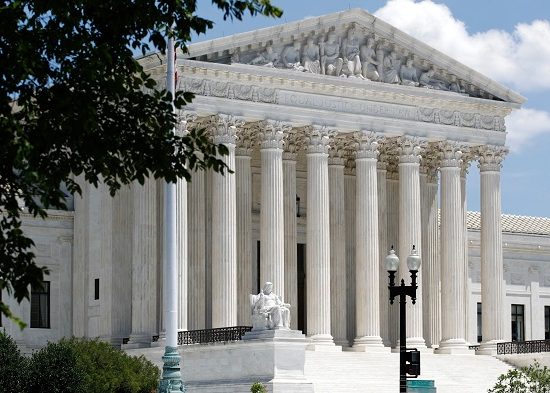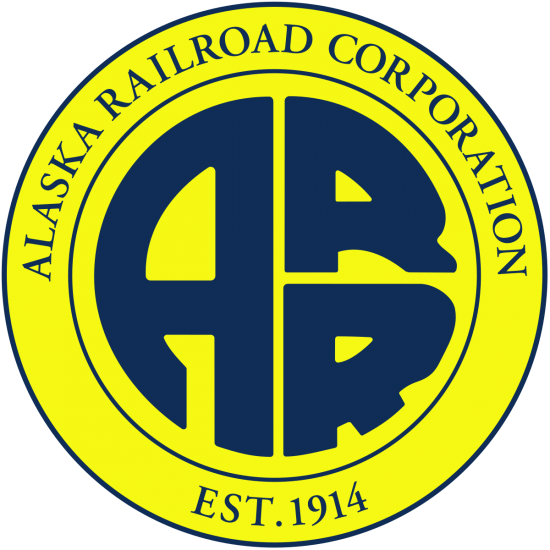
The Alaska Railroad (AKRR) view of their place in the property rights universe is most recently based entirely on their interpretation of the 1982 45 USC Ch. 21: Alaska Railroad Transfer. The relevant portion is Section 1205 Lands to be transferred (b) Review and settlement of claims; administrative adjudication; management of lands; procedures applicable (4). I will excerpt the section in its entirety with relevant portions highlighted:
===================================
(4) The following procedures and requirements are established to promote finality of administrative adjudication of claims of valid existing rights filed by Village Corporations, to clarify and simplify the title status of lands subject to such claims, and to avoid potential impairment of railroad operations resulting from joint or divided ownership in substantial segments of right-of-way:
(A)(i) Prior to final administrative adjudication of Village Corporation claims of valid existing rights in land subject to the license granted under section 1203(b)(1)(C) of this title, the Secretary of the Interior may, notwithstanding any other provision of law, accept relinquishment of so much of such claims as involved lands within the right-of-way through execution of an agreement with the appropriate Village Corporation effective on or after the date of transfer. Upon such relinquishment, the interest of the United States in the right-of-way shall be conveyed to the State pursuant to section 1203(b)(1)(B) or (2) of this title.
(ii) With respect to a claim described in clause (i) of this subparagraph that is not settled or relinquished prior to final administrative adjudication, the Congress finds that exclusive control over the right-of-way by the Alaska Railroad has been and continues to be necessary to afford sufficient protection for safe and economic operation of the railroad. Upon failure of the interested Village Corporation to relinquish so much of its claims as involve lands within the right-of-way prior to final adjudication of valid existing rights, the Secretary shall convey to the State pursuant to section 1203(b)(1)(B) or (2) of this title all right, title and interest of the United States in and to the right-of-way free and clear of such Village Corporation’s claim to and interest in lands within such right-of-way.
(B) Where lands within the right-of-way, or any interest in such lands, have been conveyed from Federal ownership prior to January 14, 1983, or is subject to a claim of valid existing rights by a party other than a Village Corporation, the conveyance to the State of the Federal interest in such properties pursuant to section 1203(b)(1)(B) or (2) of this title shall grant not less than an exclusive-use easement in such properties. The foregoing requirements shall not be construed to permit the conveyance to the State of less than the entire Federal interest in the rail properties of the Alaska Railroad required to be conveyed by section 1203(b) of this title. If an action is commenced against the State or the United States contesting the validity or existence of a reservation of right-of-way for the use or benefit of the Alaska Railroad made prior to January 14, 1983, the Secretary of the Interior, through the Attorney General, shall appear in and defend such action.
====================================
This is all contained in a section SPECIFICALLY written to address claims made by Village Corporations.
AKRR is also granted an exclusive-use easement 100’ either side of its tracks through Denali National Park. The prime grant for this is Section 1203 (b)(1)(D). It is mentioned in the definitions Section 1202 and State Operation Section 1207(d). Nowhere does this exclusive-use easement extend to any other portion of its property.
This legislation came out of Ted Stevens Senate office. Bill Sheffield was governor by the time it was passed and the AKRR purchased from the feds. Steven McAlpine was Lt Gov. Both were reportedly involved in crafting the legislation. Sheffield is still on the AKRR Board of Directors. McAlpine left the Regulatory Commission of Alaska (RCA) following his 6-year term in March 2021. Both have been supportive of the AKRR through the years.
The second piece of legislation is Chapter 37 of the 63rd Congress, passed in 1914 which authorized location, construction and operation of railroads in the Territory of Alaska. Relevant excerpt follows:
=====================================
To purchase or otherwise acquire all real and personal property necessary to carry out the purposes of this Act; to exercise the power of eminent domain in acquiring property for such use, which use is hereby declared to be a public use by condemnation in the courts of Alaska in accordance with the laws now or hereafter in force there; to acquire rights of way, terminal grounds, and all other rights;
=====================================
Formal rights of ways for railroads in the US were established in the General Railroad Right-of-Way Act of March 3, 1875. It essentially converted land grants conveyed to the railroads before 1871 from “limited fee” ownership of the land to easements. The biggest difference between the two is that when a limited fee ownership is abandoned, it reverts to whomever is on it. An easement allows the property to easily transfer without impacting the railroad built and operating in the easement.
This Act has been litigated over the years, generally with the railroads pushing for fee simple ownership of rights of way and the federal courts responding that the language of the Act conveyed easements rather than exclusive property rights. The linked Department of the Interior Sept 2017 document appears to be one of the better summations of the current state of the discussion and governing court decisions. There have been at least three Supreme Court (SCOTUS) opinions affirming the easements created in the 1875 Act.
Nothing any of the three controlling federal statutes conveys or much less defines exclusive or fee simple rights for the AKRR, something they claim to have. AKRR is interpreting the language in the 1982 Alaska Railroad Transfer Act as a complete award of ALL property rights along the track right of way (100’ either side of the track centerline) as fee simple ownership, exclusive easement, yet the term exclusive use is only used in connection to the portion of AKRR tracks through Denali National Park and anything associated with a Village Corporation.
Next will be a closer look at what the federal courts have had to say about railroad easements.
Alex Gimarc lives in Anchorage since retiring from the military in 1997. His interests include science and technology, environment, energy, economics, military affairs, fishing and disabilities policies. His weekly column “Interesting Items” is a summary of news stories with substantive Alaska-themed topics. He was a small business owner and Information Technology professional.








